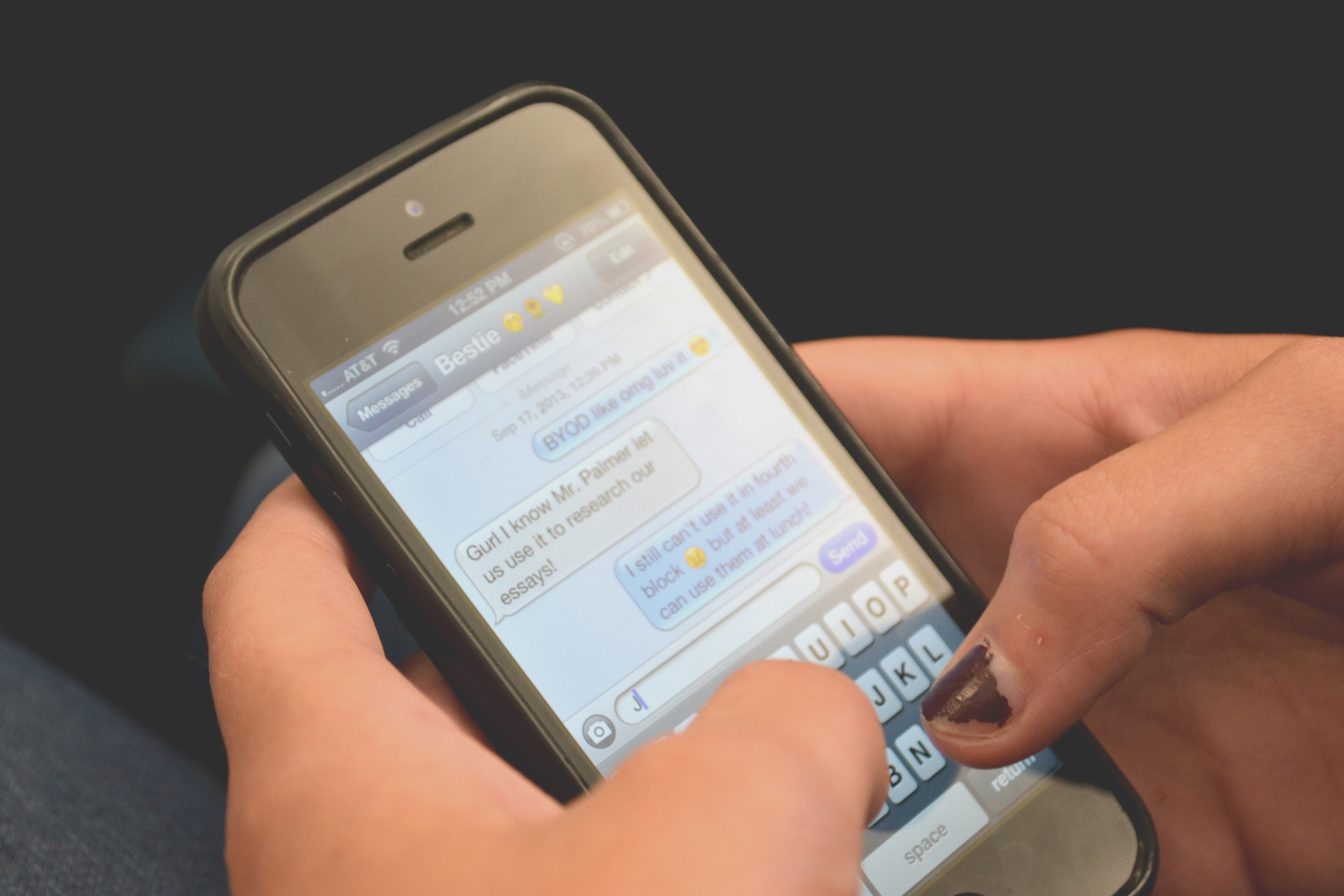School becomes tech saavy
September 19, 2013
 Bring Your Own Device (BYOD) is a county-wide policy that allows students to use their personal electronic devices at specific times and places during the school day. However, some students haven’t noticed a change.
Bring Your Own Device (BYOD) is a county-wide policy that allows students to use their personal electronic devices at specific times and places during the school day. However, some students haven’t noticed a change.
“I used to use my phone anyway,” sophomore Ava Thorton said. “Now I can just be more open about it.”
Some students are not complaining about the policy.
“A lot of teachers still don’t let you [use personal devices]. I don’t feel like much has changed,” said senior Helena Wojcik. “It’s progress, though; a step forward.”
Assistant Superintendent Frank Finn helped develop the policy.
“The reality was our old discipline policy was outdated,” Finn said. “What was happening day-to-day in most of our schools was that students had devices and may have been using them in a covert fashion. To have this comprehensive ban on electronic devices, particularly technology devices that could add an educational value, just ceased to make sense; change was long overdue.”
The use of devices at school is regulated with green, red, and yellow zones. The cafeteria is a green zone. Students cannot use devices in the hallways during class changes because of safety issues and concerns about students being late to class. The classrooms are yellow zones, meaning the use of student devices is up to the teacher.
“Most of the math teachers are concerned that students are just using [BYOD] as an excuse to play on their phones,” math teacher Carol Hordusky said. “It’s a learning curve; I have mixed feelings. For my class, I see no use for it; for other classes I can see how they might.”
Some teachers envision using student devices to access interactive apps and the internet.
“I’m excited; it opens possibilities in the classroom setting,” English teacher Lindell Palmer said. “We say we teach for the future; educators tend to stick to the things we know and how we were raised. [The use of devices in the classroom] would prepare students for the world we actually live in.”
English teacher Cynthia Pryor feels it’s important that students without devices are not excluded from the learning experience.
“I think we have to consider how to make participation in BYOD equitable for all students,” Pryor said. “If some students can’t participate because they or their families have chosen to remain ‘unplugged’ then how do we make this opportunity accessible for them?”
Some feel that making students provide their own technology is unfair.
“The county needs to take responsibility and provide the resources for the students,” junior Evan Daly said. “They’re trying to get out of that responsibility by “letting” students bring their own devices.”
Teachers expressed concern about an increase in cheating. However, many students feel that if they want to cheat, they can, phone or no phone, and there are easier ways to do it, such as simply looking at a classmate’s work.
“I don’t cheat personally,” junior Will Griffin said. “But if I did, I would just write it on my thigh.”
Teachers can require students to turn off their phones and put them on their desks on test days. As the program progresses, Finn believes teachers will acquire instructional strategies to use the students’ devices.
“I believe in telling students what the expectations are and saying this is how we want you to use these devices,” Finn said. “When you have an expectation that’s out there, the vast majority of students will meet that and respect that expectation.”
The increase in the number of devices accessing the school’s network has strained capacity, according to Todd Hickling, manager of information resources. Students who connect to the school’s network can be monitored and will be blocked from accessing prohibited sites.
“Regarding blocked sites, all BYOD’s that use school wireless to connect to the network will be filtered like any other device on the network,” Hickling said. “If a BYOD is using their phone provider’s service, such as Verizon, then they will not be filtered. We can monitor the BYODs on the network, but we cannot monitor the BYODs when they are using their service provider.”
Like any new program, BYOD is expected to have some problems that need to be tweaked, but Finn is confident that students and faculty will recognize its value. As an added benefit, BYOD may reduce the amount of technology schools must purchase.
“I think it’s recognition of where our students live in other areas of their lives, and recognition that we shouldn’t exclude access to technology, particularly if it can help enhance education in the educational setting,” Finn said. “I think it’s time, and the value is there.”






